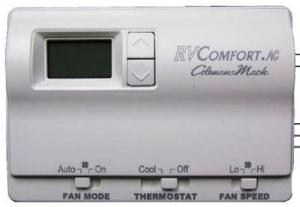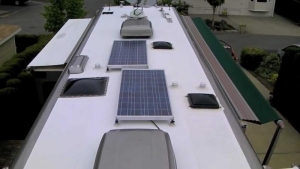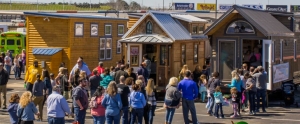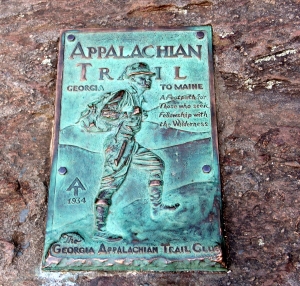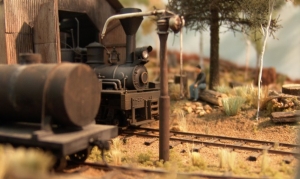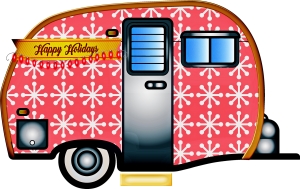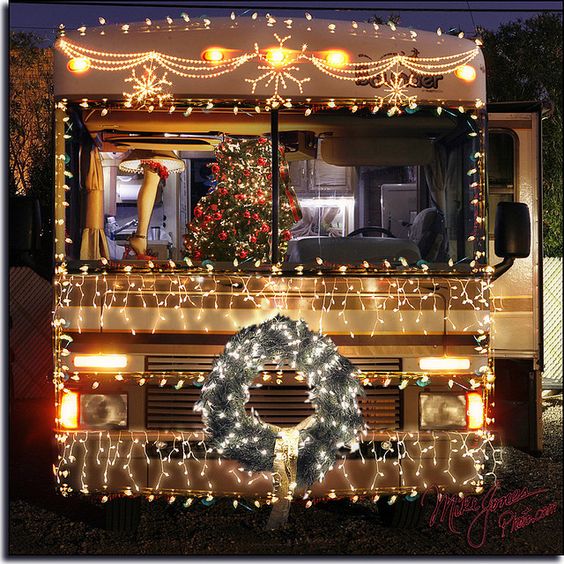Welcome to Crossing Creeks RV Resort & Spa in the heart of iconic Blairsville
Matt
So, You Want To Be in a Georgia-Filmed Movie
The Crossing Creeks RV Resort & Spa blog isn’t likely to make you a star, even though we do our best to treat you like one. But we can help you go about trying to land a part as an extra in one of the many productions that are filmed in Georgia.
Opportunities to appear on film or the small screen are more plentiful than you might know, with Atlanta being the Hollywood of the Southeast. Or maybe we should say that Hollywood is the Atlanta of the West Coast, since more films are shot in Georgia than in California the past three years.
Don’t get us wrong: There’s always a ton of competition for movie parts, even for non-speaking roles in the background of movie scenes. Getting into a movie in a nonspeaking role isn’t a cinch, but it’s not impossible, by any means.
What Roles Do Extras Play?
Film extras are needed to play many types of roles.
You don’t need to have movie star looks to get a role as an extra. You don’t even need a movie star smile. Sometimes it helps, but the fact is that all types of people are needed as extras, depending on the part. Sometimes your serious look is all you’ll be asked to show.
Old people, young adults, male or female, children, skinny or rotund, buttoned-down or right off the Harley, fit or totally out of shape, babies—all are likely to be in need from time to time, depending on the film. Extras may be needed to fill a ballpark, a lobby, an airport terminal or a crowded street.
Online recently, for example, was a call for extras to play downtrodden street people in the cop buddy film “Bad Boys For Life,” now in production, starring Will Smith and Martin Lawrence. Looking perfect didn’t appear to be a priority. The “Jumanji: Welcome to the Jungle” sequel starring The Rock was looking for college students and “upscale types.”
Sometimes there are certain conditions for extras. For example, when Clint Eastwood was in Georgia filming his movie “The Mule,” about a 90-year-old veteran who became a drug runner for a Mexican cartel, he sought real veterans for a party scene inside a VFW post. The extras had to have their own cars. And the cars had to be certain colors. White, red or custom-color cars disqualified you. Hey, you never know when they’ll want an RV with a dent exactly where there’s damage on your Class C.
You May Get Paid, But You Won’t Retire on It
Extras—also referred to as Background people, or BG—in Atlanta typically are paid about $8 to $9 an hour. That would include the time you spend waiting, listening to direction—likely in a group—and acting. Sometimes film companies will pay extras by the 8-hour day, but it still comes out to about the same hourly pay. If you run into overtime, you’re paid for those hours at time-and-a-half. Plan on a 12-hour day, typical on the set.
If somehow you end up in a speaking part—not likely if you have no experience or training—pay may go to $500 a day or more.
How To Apply
Advertisements for actors are referred to as casting calls. They are advertised online. You can find casting calls by doing a search such as casting calls Atlanta, movie rolls Atlanta or casting calls Georgia. Some of the national sites have an option to search for casting calls close to where you live, but they also have listings for other locations. Occasionally, if a huge number of people are needed, an open casting call is posted.
You really should register with casting agencies, which can be done online or in person. The usual registration includes a one-page resume and brief listing of experience, if you have any. You also must include age and basic body measurements, including height, weight and dress/coat size.
Photos for most agencies seeking extras don’t have to be professional. Selfies or cell phone shots by someone else usually work fine; they let agents and directors see how you really look. In addition to your face, a clothed body shot from the knees up is helpful. If you have the clothes, dress in outfits appropriate for different characters: a business suit, casual clothes, exercise clothes, formal attire, outdoor active wear, a period costume if you have one. You don’t need all of them, just some.
Once you’re registered, update your files periodically—annually will suffice.
Agencies operating in Atlanta include:
- Background Artists Casting Atlanta
- Catrett & Associates Casting
- Cynthia Stillwell Casting
- Extras Casting Atlanta
- Hylton Casting
- New Life Casting
- Pierre Casting
- Rose Locke Casting
- TaylorMade Casting
- Tammy Smith Casting
Agents Use Facebook
All of the agents listed here are on Facebook. Once you’re registered, follow the site and submit to calls on the agents’ Facebook pages.
It helps to have a Facebook page of your own containing your name and describing you and your skills for agents to see. Once the call is put out on Facebook, just write a comment saying “submitted.” You’ll be notified on the agent’s page only if you’re invited to come in for a role.
Break a leg!
Is It Time for an RV Thermostat Upgrade?
Coming home to—or waking up to—a comfortable RV is fairly easy to accomplish, and quite affordable. All it takes is a digital, programmable thermostat. Let’s face it: If you can program your coffeemaker to percolate before you’re out of bed, you ought to be able to program your heating and air-conditioning to be ready when you are. A programmable thermostat lets you do that.
Most RVs are equipped with old-fashioned nonprogrammable thermostats, which are analog, minimally adjustable, not very accurate and, quite frankly, cheap.
Installing analog thermostats at the factory is just one way manufacturers keep the suggested retail price of their RVs low. When you consider how much comfort and convenience a digital, programmable thermostat offers, and how low the price is in the grand scheme of things, leaving one off the standard equipment list ought to be a little embarrassing. But combine it with low costs for such things as standard plumbing fixtures, vents and cabinetry, and that sticker price really comes down.
It’s not prohibitively expensive to upgrade a thermostat, although installation of some units is best left to a professional. Even so, figure on $75-$150 for a DIY upgrade, or $300-$400 if you have the work done for you. For the year-round comfort the thermostat will supply, it’s a worthwhile investment either way.
Preprogramming is Key to Comfort
A programmable thermostat makes life in an RV much more livable.
First, the settings are more refined. It’s possible to set temperate changes ahead of time, such as an hour before you return to your RV from a day out and about, or in the morning, just before you routinely rise. Some models let you change settings at any time by Internet or by cell phone.
Then there’s the accuracy of the settings. Digital thermostats are much more accurate than analog examples. Analog settings are often off by 10 degrees—sometimes even more—creating a “freeze-or-fry” situation. Digital settings are more typically accurate to within 2 degrees, and often a single degree.
Programmable, digital thermostats are more likely to control both air conditioning and heat, rather than heat alone. Carefully read the specs on any unit you’re considering to make sure, however, because many less expensive digital models also control heat only. And remember: Just because a thermostat is digital doesn’t mean it’s programmable; check to be certain.
Naturally, as the number of features increases, so do prices.
Where To Buy
RV digital thermostats are available from quite a few sources, as an Internet search will quickly show. There’s Amazon.com, ubiquitous in any search; chain RV dealers, such as Camping World; and local, independently owned RV dealers.
RV dealers or shops may require you to purchase from them if you want installation service, so check ahead of time. Pro installation is sometimes required to preserve the thermostat warranty.
Compatibility
Not all thermostats work with all models of heaters and air-conditioners. Sometimes units made by a manufacturer aren’t even compatible with all of its own HVAC models. For instance, a good-performing programmable, digital thermostat, the Dometic 3109228.001, is not compatible with the company’s Penguin products, but it works with Penguin II. Sometimes substitute boards are available to make otherwise incompatible products work together.
Find out ahead of time if the thermostat you’re buying will work with your setup. That may be easier if you buy from a dealer or bricks-and mortar retailer with knowledgeable sales people. You can also send a question to the manufacturer or, if it makes the number available, telephone with your question. A Google search for manufacturer model number customer service telephone should help you find the number. Some e-tailers also answer questions with live chat or by phone.
Caution: Don’t depend too much on a community FAQ board. One we encountered posted a question about compatibility between the thermostat being sold and a certain air-conditioner. The first answer, simply, was “Yes.” The second answer, just as cryptically, was “No.” No help whatsoever!
Some things you may need to know and should ask before buying:
- Can the thermostat be wall-mounted? (That’s preferable for more accurate readings, since heat rises and roofs soak up considerable heat from the sun.)
- Is it compatible with my air-conditioner, heat pump, or furnace? (Look for make and model numbers to check.)
- Must I change any control panels? If so, which panels do I need?
- Must I add a wiring harness to make connections? If so, is a wiring harness included?
- Must I add or replace relays? How many?
- How is the thermostat powered—12V, telephone line or batteries?
- How do I ensure compatibility if I’m replacing my air-conditioner or heat pump?
- Does DIY installation void my warranty?
- Does the thermostat automatically switch between cooling and heating once the temperature is set? (This is highly desirable.)
- Does it have a backlit display for easy nighttime reading?
Some Models to Explore
Here are some digital, programmable thermostats to consider and their approximate cost:
- Dometic Model 3109228.001 Comfort Control Center. ($100)
- Dometic Model 3314082.011 Comfort Control Center II, or CCC2. Multi-zone for bigger RVs. ($135)
- Coleman Digital Wall Thermostat Model 8330-3482. Includes plug-type wiring connections. ($120)
Photo credits: airxcel.com
Replacing RV Floor Covering
If your RV interior is starting to show its age, especially but not necessarily only underfoot, consider new floor covering to make it look—and feel—newer.
Chances are, your RV has carpeting that shows its age where foot traffic is heaviest—definitely by the entry door, probably near the bathroom, and possibly where traffic routinely flows.
And then there’s the color. Color analysts from different industries actually sit down every year and decide not only what colors will be the “it” shades for the coming years, but even what the colors will be called. That’s right: There are people actively planning to make your carpet, draperies and furniture obsolete simply because of the colors they are.
On Being a Slave to Fashion
You can always say, “No, I’m not getting rid of perfectly good carpet.” After all, who’s going to enter your RV here at Crossing Creeks RV Resort & Spa and say, “Your colors are so outdated.” What they’ll say is, “Oh, Charlie, look. Remember when we had carpet that color?”
If carpet is worn from lots of boondocking or trips to the shore, you have choices in recovering your floor tastefully.
New Carpeting
Look for short-pile, closed-loop carpeting because it cleans up well, but you certainly don’t have to. You’ll save hundreds of dollars if you can find a remnant, often avalable at carpet store, discount stores and odd-lot bargain outlets.
You’ll have ample choices in color, whether you go with solid or a heather that gives the look of a solid but shows a little more life. If you’re having movie stars over, choose red. (OK. Just kidding.) When keeping your furniture, keep in mind the fabric on them. Get carpet swatches if you can and lay them on the fabric to make sure there’s no clash. If your furniture is solid, a pattern carpet might work. But be careful, since RV floor space is, all things considered, small enough to be overwhelmed by too busy a print.
Then choose between roll carpet, which must be stretched tightly before it’s stapled subfloor, or self-adhering carpet squares, also called carpet tiles. Laying roll carpet can be trying, including physically, but it’s possible to do it yourself. The fewer seams, the better looking the results. Make sure to snug seams so they disappear. Sometimes taping seams underneath with carpet tape helps.
Installing carpet tiles is easier. They’re often used in offices and sometimes in below-grade family rooms. You’ll have to scrape off the remnants of any previous floorcovering and pull staples so the subfloor surface is smooth and clean. You’ll also have to find the center of the floor and strike perpendicular chalk lines, starting at the center and working toward walls and furniture. That way, carpet squares in the center of the floor, where they are most obvious, will be full. Cutoff carpet tiles will be near walls or cabinets.
Short-pile carpet cleans up well. Spills, mud and sand come up easier than with plush carpet. Wet spots will dry faster.
Laminate Floors
Laminate floors have been round for about 35 years. They are laid over a thin foam pad but are not nailed down. The rectangular slats, which are high-density fiberboard with laminate coverings resembling wood or grouted stone, snap together to become one giant slab. Seams are barely visible. Laminate floors must have about a quarter-inch of play at the edges so they can float with temperature and humidity changes. Edges get moldings to cover the gap.
Installation isn’t particularly hard. You will need a chop saw to shorten some pieces and a jigsaw to cut around wall protrusions and cabinets.
When you’re done you have a wood-look floor that’s water- and mud-resistant but not waterproof. It cleans up easily from spills and tracked mud, and salt and sand don’t soak in. Dogs may need a little time to get used to its lack of traction for their claws, but they will, and claws won’t scratch it—not even after a decade of use.
For a little more color, warmth and cushion, you can spread an area rug over top, with a nonslip layer in between.
Vinyl Plank Flooring
Vinyl plank flooring comes in two types. Both, after installation, appear similar to a laminate floor, with a wood grain look.
One style of vinyl plank is a floating floor that’s installed over a thin foam pad. Floating vinyl planks adhere to one another, but not to the pad. The second type installs more like traditional vinyl tiles, with a peel-off back that exposes an adhesive that sticks directly to the plywood subfloor.
Vinyl planks are easier to work with than laminate. They cut with a utility knife. No saw is needed.
Vinyl planks are waterproof and impervious to mud, sand and salt. They won’t stain easily and wipe clean with a sponge mop or, after a spill, with a paper towel. They hold up well against claws.
Photo Credits: ciker.com
Motorhome Leak Prevention, Identification and Repair Steps
When water gets inside an RV, the problems it causes are a lot bigger than each of those tiny drops.
Some water damage is easy to see because it marks interior surfaces.
Other water damage is harder to see because it’s inside walls, ceilings and floors. Framing can rot. Sidewalls can delaminate. The hidden damage may be the most sinister because it may include dangerous mold.
Water can enter an RV anyplace the outer shell is breached—and an RV has many openings, some intentional, others not.
Here are the places leaks are likely to occur:
- Roof and roof coating
- Skylights and vents
- Mounts for accessories, such as solar panels, antennas, ladders and horns
- Windows
- Doors, both entry and storage
- Utility hookups
- Corner seams
Leak Prevention
Every four to six months, check any Dicor coatings over seams and around equipment mounts. Look for cracks, both large and small.
Also make it a habit every four to six months, during prolonged good weather, to pull a few screws. Many screws are under decorative covers, which you’ll have to pry off gingerly to avoid breaking. (The older non-metal covers are, the more likely the sun has baked them into a brittle state. If you break a cover, replace it.)
On campers with corrugated siding, be sure to check some screws on corner moldings.
Look over the backed out screws. If the threads are rusty, water is entering.
You also should check your EDPM (ethylene propylene diene monomer) roofing. You don’t need to re-seal the roof surface, but you should clean it with a medium brush and mild detergent that does not contain petroleum distillates every six months. Keeping it clean will allow you to better identify any breaks or weak spots.
Leak Detection
The most obvious sign of a leak is a water stain on an interior wall or ceiling, or delamination of cabinetry where water soaked it. Mildew or mold also may appear. Unfortunately many leaks simply don’t show on a surface.
Water migrates inside walls and ceilings, so the leak may be in front of, behind or beside the damage. For that reason, try to detect leaks on the exterior. One method is a pressure test. You can pay to have this done by a dealer or shop, usually for $200-$250, plus a labor charge if the shop does the repairs.
During a pressure test, compressed air is pumped into the RV. Soapy water is sprayed onto seams—around windows, doors, roof-mounted equipment, essentially all the areas listed above. If air is escaping, the soapy water will bubble. The same gaps, though quite small, that let air out probably let water in.
You can perform an air test yourself, even without specialty equipment. Make a hard cover for a small exterior opening, such as to a storage area, and cut a hole to accept the end of a shop vacuum hose or leaf blower outlet. Insert the hose and duct tape the connection, log with the edges of the patch, turn on the pressure and spray the soapy water, then look for leak-indicating bubbles.
Another method is to spray canned smoke inside where you suspect a leak, and have another person outside to look for escaping smoke.
Leak Correction
Frequently, all that needs to be done where Dicor is cracked is to plug the cracks with more Dicor, applied with a caulking gun. Clean the surface first with a rag dampened—not soaked—with mineral spirits so the new Dicor will adhere. Dicor, which is self-leveling, seeps into the cracks after it is applied.
Warning: Mineral spirits can harm EDPM roofing, so apply sparingly. The best thing to do is wipe areas where mineral spirits were applied with a cleaner that does not contain petroleum distillates.
If there’s a crack in the EDPM, Dicor is compatible and can be applied to seal the breach. Use the same procedure as for cracked Dicor.
Also look for loose Dicor. It would probably cause a major leak around mounts or large breaches, such as for vents or skylights. Remove loose Dicor and the item it’s sealing, then reinstall and reseal the accessory. If there’s evidence of water damage in the ceiling or in sidewalls, spray with a disinfectant, then dry everything out with heat and lots of airflow before reassembling and installing a new bead of Dicor and screws. Dicor is compatible not only with EDPM, but also with wood, fiberglass, plastic, steel and aluminum.
Replace rusty screws in the proper size. Coated screws will be less prone to rust.
If you’re sealing corners, consider a tape such as Seal-Tite. Once you’ve removed the insert trim, which hides screws, remove the screws, molding and old sealant, such as tape or putty. Stretch the pressure-sensitive side of the flexible tape over the opening, being sure to close gaps due to the irregular surface of siding. Then replace the cleaned molding coated with underside beads of sealant along the two edges, and new screws. You may want to add new insert trim in the molding for better looks.
Georgia Tiny House Festival
Tiny houses are all the rage. One-bedroom and even no-bedroom homes with all the amenities of home—but a fraction as big—are the darlings of shelter magazines, lifestyle websites and TV feature shows.
And you have to admit, they’re pretty neat. Don’t take our word for it; check out diminutive domiciles at the 2019 Georgia Tiny House Festival in Macon, GA, one of the biggest and best-attended festivals of its kind in the country. The show site this year is bigger, at Central City Park in Macon, GA, a little over three hours from Crossing Creeks RV Resort and Spa.
The show runs from 9 a.m., Friday, March 1, to 5 p.m., Sunday, March 3.
All for Charity
The Georgia Tiny House Festival, presented by the United Tiny House Association, Eatonton, GA, is in its fourth year. The primary purpose is to spread the word about the benefits of and choices in small housing. Proceeds from the show, which charges admission to attendees age 13 and older, helps local charities. Children 12 and under and military/first responders, past and present, enter free. Seniors receive half-off at the gate.
Everyone gets in free at 5 p.m. on Friday, March 1.
Primitive RV campsites are available for either one night or two, in either small (10x20 feet) or large (20x40 feet) configurations. You will be boondocking; be prepared.
Details below.
What’s a Tiny House?
A tiny house, depending on the unit, can serve for off-grid living, on-grid living, wilderness living, or urban living, according to the Tiny House Association.
Some tiny houses—think destination trailers—are built on chassis and have wheels and tires for towing. They may resemble traditional travel trailers, small cabins or cottages. Destination RVs have plumbing and electrical hookups just like more conventional RVs. Some also are set up for boondocking. Destination trailers are well-appointed, typically with a living/dining room, possibly with sleeper sofas in the living room, kitchen with full-size refrigerator/freezer, bath, laundry and queen-size bedroom. Some have a second bedroom or stairs to a loft bedroom suitable mostly for children. Many have small porches.
Destination trailers are just that: trailers best used at one site you may rent long-term or own, such as at Crossing Creeks. (Not all examples will be allowed in to all facilities, so check with management before you buy.)
Many Shapes, Sizes
Tiny houses come in many more shapes and styles. Some are factory-built and intended for permanent onsite use, with connections for well pumps and onsite sewerage. Others are conversions of things as widely divergent as shipping containers and school buses. If you’re laughing at the thought of shipping containers, you’ll be interested to know that some conversions are so high-end that they make it onto the pages of slick architectural publications.
At the 2018 Georgia festival, which was the world’s third-largest event displaying tiny houses of all types, 92 tiny houses were on display. That number is expected to grow this year. The tiny houses on display are open to tours, including some that are lived in full-time but are shared for three days with the curious.
School Bus Conversions
Converting school buses has become so popular that the show’s workshop on the subject is sold out. Keep the workshop in mind for next year. Even if you don’t want to convert a school bus, a type of RV that some parks don’t allow, what it teaches about electricals, structure, plumbing, cabinetry and furniture-making is valuable to many RV owners looking to do some of their own maintenance and improvement.
Workshops, Talks
Admission includes talks and workshops by people who’ve studied small houses, manufacture them or live in them. These events are scheduled daily.
2019 Georgia Tiny House Festival
- Venue: Central City Park, 115 Willie Smokie Glover Drive, Macon, GA 31201.
- Dates: Friday, March 1-Sunday, March 3, 2019.
- Hours: Friday, Saturday, 9 a.m.-8 p.m.; Sunday, 9 a.m.-5 p.m.
- Cost:
- Friday, 12-4 p.m., $10, age 13 and older.
- Friday, 5-8 p.m., free all ages.
- Saturday or Sunday, $20 at the gate, age 13 and older; seniors, half off
at the gate. - Saturday and Sunday combo: $35 at the gate, includes admission both days, age 13 and older.
- Discount tickets: online in advance until Feb. 28, 2019; Saturday or Sunday, age 13 and older, $15; Saturday and Sunday, $30.
Free admission, all times: Age 12 and under; active/retired/discharged military, law enforcement, and on-scene first-responders with valid photo ID
Dry campsites: Limited number, available in advance online: small, 10x20 feet, Saturday night only, $27.37; small, 10x20 feet, Friday and Saturday nights, $48.47; large, 20x40 feet, Saturday night only, $43.19; large, 20x40 feet, Friday and Saturday nights, $80.12; up to six people per trailer, each must have event ticket age 13 and older
Directions: Macon Central City Park is just over a 3-hour drive from Crossing Creeks RV Resort and Spa
Crossing Creeks RV Resort Mileposts: So Many Places To Go
If you need a few reasons to stay at Crossing Creeks RV Resort & Spa, or to own an RV lot here, all you really need to do is check out a few mileposts.
Crossing Creeks is nestled in the Blue Ridge Mountains in northeast Georgia, very near the state’s highest point. It’s seemingly removed from the hustle of the everyday world. It is, in every sense of the word, an escape. Hiking, fishing, canoeing, biking and many other activities are as close as you could possibly want.
And yet Crossing Creek is a stepping stone to history and culture, including beautiful cities in several states. If you’re on your way from the mid-Atlantic, Northeast or Midwest to Disney World, the Universal Orlando Resort movie theme park, Cape Canaveral or any other Florida attraction, Crossing Creeks is a great place to stop for a night or a few days. The full-service RV campsites and spa facilities, including a pool, will get you refreshed before you head out on the final leg to your destination. (Sure, you can stop again on the way home.)
Crossing Creeks truly is a destination in and of itself, but don’t forget to consider how much there is to do within hours and even minutes of the RV resort. Check out a few mileposts to see just how many great places to enjoy are less than a day’s drive away:
Fishing: A few feet. Rock Creek in Blairsville and other streams have trout waiting to be caught. Lake Nottely, 9 miles away, has lots of bass, rainbow trout and black crappie.
Boating: 9 miles. Lake Nottely has more than 100 miles of shoreline. Boaters love it as much as the anglers do.
Spectacular views. 20 miles. Brasstown Bald is the state’s highest point, and it’s half an hour away. The viewing deck offers a sightline that stretches well into North Carolina on a clear day, and as far as the Atlanta skyline to the south. The fall view is breathtaking.
Appalachian Trail: 24 miles. The nation’s best-known and perhaps most beloved marked nature and hiking trail is so close. You’ll find several well-marked day hikes along the Georgia section of the AT. The trailhead is only 48 miles from Crossing Creeks on Springer Mountain.
Whitewater sports: 26 miles. You’ll find whitewater many places west of the fall line in the Georgia mountains. The nearest spots are around McCaysville, a neighboring community to Crossing Creeks. A unique whitewater experience is in Columbus, GA, which has the world’s longest stretch of urban whitewater kayaking and canoeing—2.5 miles of whitewater passing by the city skyline. It’s 217 miles away.
Culture, Nightlife: 124 miles. That’s the distance to Atlanta, the social and cultural hub of the Southeastern United States. One of the nation’s oldest cities, it is steeped in history and filled with museums. And yet its downtown and trendy neighborhoods, including Buckhead, bubble with nightlife and fine restaurants. There’s a whole, big, glittering world just 2 hours away from Crossing Creeks.
Peanuts: Probably inches away. Peanuts aren’t hard to find in Georgia, where so many are grown, but especially in the sandy soils east of the fall line. Try some boiled—that’s the Southern way to prepare them. And check out the National Peanut Museum in Tifton, 289 miles away.
Vidalia onions: 288 miles. Vidalia and the region around it are known for the nation’s best sweet onions. Only onions grown in that specific region of Georgia can be labeled Vidalia. You’ll find them everywhere in Georgia from late summer through fall. See how they’re grown and visit the Vidalia Onion Museum.
Peaches: Everywhere. Only in Atlanta could you meet at the intersection of Peachtree and Peachtree. Buildings, streets, parks and neighborhoods are named Peachtree. All around the state are real peach trees. Once the harvest starts, you’ll find your way to great places with peach ice cream, peach cobbler, peach pie, peach preserves and just wonderfully fresh, sweet peaches. And you’ll do it over and over again.
Movie sets: Around the state. Scores of movies are shot in Georgia, or at least partly here. Some you might have heard about or seen: “The Mule,” “Black Panther” and “We Are Marshall.” A new film production studio is under construction in Atlanta. Casting agents advertise occasionally for extras. Keep an eye out. You may be able to watch a movie being filmed—or be in one!
Fine wine: 7 miles. Odom Winery is the closest—it even has a Blairsville address—but there are more than two-dozen wineries nearby, enough to make a nice tour and tasting, or maybe even two.
Golf with the gods: 378 miles. Myrtle Beach, SC, is about a 6½ -hour drive, almost due east. So, yes, you can play Myrtle Beach, replenish yourself at Crossing Creeks, and then head to Florida without going out of your way. Good deal.
Major League Baseball: 102 miles. The Atlanta Braves are playing in Sun Trust Park, in just its second year, a few miles north of the city. The stadium alone is worth the trip, but we’re talking about the defending National League East champs here. Established big league stars and exciting up-and-comers are less than 2 hours away.
Country music: Probably around the corner. It’s not hard to turn and hear a fiddle being sawed, a guitar being strummed or a banjo being picked. Any bar with entertainment around here has country bands.
The Best County Music: 232 miles. Nashville and its Grand Ole Opry are a four-hour drive from Crossing Creeks. Hit the saloons and hear ’em before they become stars.
NFL football: 114 to 230 miles. Take your pick: The Atlanta Falcons of the NFC play in Mercedes Benz Stadium, 114 miles away. The Tennessee Titans of the AFC play in Nissan Stadium in Nashville, TN, 228 miles away. The NFC’s Carolina Panthers play in Bank of America Stadium, Charlotte, NC, 230 miles away.
NBA basketball: 114 to 230 miles. Two of the cities that have NFL teams also have pro hoops: Atlanta has the Hawks, and Charlotte has the Hornets.
NCAA sports: Everywhere you turn. Blairsville is within a reasonable distance of several Southeastern Conference teams, including the Georgia Bulldogs, 91 miles away in Athens; and Atlantic Coast Conference teams, including the Clemson Tigers, 89 miles away in Clemson, SC. There are many other lesser known schools with affordable competition in a full line of indoor and outdoor men’s and women’s sports. Many of these events, outside of football, are inexpensive.
Savannah, GA: 372 miles. One visit to Savannah will convince you of two things: It really is one of the country’s most beautiful cities. And one trip is not enough.
Charleston, SC: 339 miles. That’s right—Charleston is a half-hour closer than Savannah. Charleston, one of the country’s oldest port cities, is known for its friendliness and hospitality, and it’s a looker, too.
There’s a lot more to do and see, but we’re going to stop now. We don’t want to bore you ... not that we could.
RV Party Tips for the Super Bowl
The Super Bowl is in Atlanta on Feb. 3, and although the Falcons won’t be there this year—they didn’t even make this year’s post-season—having the game in Georgia ought to be a good enough incentive to host a Super Bowl Party.
Whether you’re watching the Super Bowl in your RV, outside your RV or in your home, there are some things you should make sure to do so you can enjoy the party and the game.
Decorations
You can go three ways here:
Generic. Decorations that use football themes—goalposts, yard line markers, footballs, officials in striped shirts signaling a touchdown—are cheaper than items with team names. They can be reused every year and for college games, too. Try windycitynovelties.com for a mind-boggling assortment.
Team colors. Get the colors of your favorite team or both opponents and have at it with colored plates, crepe paper, balloons and beads. Make sure your plates are good and sturdy.
Insignia decorations. You’ll pay more for these, with either the Super Bowl LIII logo or with team-specific logos. If you buy team logos, and one is New England, at least you know they have a good chance of coming back every year to use up your leftover items. Seriously, check out Party City.
Bonus idea: Get yellow paper napkins, and lots of them, so guests can toss them like penalty flags every time somebody jumps offside or interferes with a pass. Some may even wipe sticky fingers with them.
 Seating
Seating
Have a comfortable seat for everyone. Arrange chairs so everyone not only has a good view of the TV, but also can get up and down easily to get more food and drink.
Plates, Cutlery, Cups
Make sure everything is sturdy. Cups should be plastic and big enough to hold a full beer or mixed drink, but not the flimsy red cups—not with all the fist-clenching that’s done during this game. Cutlery should be functional—probably the clear deluxe types, or even the heavy-duty coated versions that look like metal utensils but are really strong plastic. Plates should be resistant to grease and sturdy. You’ll have fewer accidents—like food falling off a fork onto a guest’s sweater, or plates and bowls collapsing under the strain of your chili and staining a carpet or upholstery. Chinet has a good assortment of disposables that get the job done stylishly.
Convenient Menu
You want to see the game (and the commercials), not spend three hours at a stovetop, even if you have a couple of hot dishes. Look for recipes that cook up well in a slow cooker, which will not only cook the food with minimum fuss but also keep it warm. Slow cookers are compact and efficient. These days, they’re also surprisingly inexpensive. Buy an extra one if need be. Slow cookers take up a lot less space than a chafing dishes and sterno heaters, and they come in different sizes. Fox Sports has good Super Bowl slow cooker recipes online. Serve an assortment of cheeses, crackers, chips, dips, pretzels and sandwiches. Today.com has 50 suggestions for all types of Super Bowl Party foods.
Emergency Kit
Stuff happens. Make sure you have these on hand: extra paper towels and stain-lifting wipes in case of fumbles, and antacids, just in case someone decides your chili was a bad call.
Image Credits: American Heart Associates, Party City
Great Model Railroad Displays To Visit In Georgia
All aboard! Next stop: winter and spring fun at model railroad displays round the state of Georgia.
If the holidays got you to thinking about that model train display you painstaking assembled as a kid, you can scratch the itch courtesy of several model railroading clubs scattered around the state. Many have winter or spring shows that welcome the public.
Gone are the days when the Georgia Railroad, Seaboard Railroad and the Atlantic Coast Line moved tons of freight and thousands of passengers every day. The spirit lives on, though, in displays by model railroaders and in collectibles from the days when rails ruled transportation.
If you’re a full-time RVer, you certainly don’t have space for trains. (If you do, send us a photo—we’d be fascinated! Under the platform bed, maybe?) If you’re a part-time RVer, maybe you still have some trains at home and just miss them. (Yes, people with model trains love them that much.)
Choose Your Gauge
Whatever gauge you prefer, you’re bound to find it at one Georgia display or another:
- O scale: 1/45-inch, the scale of the classic Lionel trains with three-rail track
- HO scale: that’s “Half O,” or 1/87, pretty much the standard these days, with two rails
- S scale: 1/64, the measurement of the American Flyer trains, with two rails
- N scale: 1/168, about half the size of HO, to-rail track
- TT scale: 1/120, about halfway between HO and N
56th Atlanta Model Train and Railroadiana Show and Sale
Here’s a place to see six working model train layouts, and buy items from more than 300 vendors, including trains from Lionel, American Flyer, Marklin and Ives, the old Standard gauge toy trains. Tables feature tons of model railroad items and railroadiana—signs, lanterns, tickets, timetables, dining car china, and more. It’s been going on every year for more than half a century, so you know it’s a good one. The venue is new this year and bigger than the previous site.
- Date: Saturday, Jan. 19, 2019
- Time: 9 a.m.-4 p.m.
- Cost: $9; tickets online; $1 discount at www.gserr.com/shows
- Place: Infinite Energy Forum, 6400 Sugarloaf Parkway, Duluth, GA 30097
- Directions: Figure on an hour and 45-minute drive from Crossing Creeks RV Resort and Spa.
- Parking: Free in any of several onsite lots.
30th Annual Model Railroad and Train Show, Savannah
The Coastal Rail Buffs’ 30th Annual Model Railroad and Train Show is just another reason to visit beautiful Savannah—never a bad thing. The show had several operating layouts, in O, HO and N scales. Vendors offer model trains and accessories from tables.
- Dates: Jan. 26 and 27, 2019
- Times: Saturday, 10 a.m.-5 p.m.; Sunday, 10 a.m.-4 p.m.
- Place: National Guard Armory, 1248 Eisenhower Drive, Savannah, GA
- Cost: Age 12 and over, $7, except $5 for seniors age 60 and over and students; age 11 and under, free; active military, free.
- Directions: The Savannah armory is about a 5½-hour drive from Crossing Creeks RV Resort and Spa. NOTE: Road closings near the armory may cause delays.
- Parking: Passenger vehicle parking is availabkle in front nd behind the armory, and t nearby municipal lots. Several RV parks offer RV parking in the area.
Georgia State Railroad Museum
As long as you’re in Savannah, check out the Georgia State Railroad Museum. It’s on the site of the old Central of Georgia Railway Savannah Shops and Terminal Facilities in downtown Savannah. It even has a roundhouse and a giant turntable, which positioned locomotives to head into or out of any of several maintenance bays arranged in a semicircle. The museum operates the most complete pre-Civil War railroad in the country. If you’re feeling strong enough, give the handcar a try.
- Hours: 9 a.m.-5 p.m., 7 days a week
- Cost: $10, age 13 and older; $6, children ages 2-12.
- Tickets: Available online.
- Location: 55 Louisville Rd., Savannah, GA 31401
- Directions: The railroad museum is about a 15-minute drive from the National Guard Armory.
The Model Train Show, Atlanta
It’s back to Atlanta in March for The Model Train Show at Cobb Galleria Centre. Model railroad clubs from around Georgia operate layouts. Gauges on display include O, HO, N, S and TT. There’s also an exhibit by the Dixie Lego Users. The North Georgia Live Steamers display their scale model live steam trains—powerful models big enough to ride. Vendors sell their model railroad wares at about 250 tables. There’s also a white elephant table at which visitors can sell an item or two they enter into a computerized system.
- Dates: Saturday, March 16; Sunday, March 17
- Times: Saturday, 10 a.m.-5 p.m.; Sunday, 10 a.m.-4 p.m.
- Place: Cobb Galleria Centre, 2 Galleria Parkway, Exhibit Hall A, Atlanta, GA 30339
- Cost: Age 9 and over, $9; age 8 and under, free; Boy Scouts and Girl Scouts in uniform, free.
- Parking: Passenger vehicle parking at the Galleria is $5 per day, debit or credit only—no cash. RV parking is available at a number of RV parks in the area.
- Directions: Cobb Galleria Center is just off the intersection of Interstates 75 and 285. Plan on a little less or more than a 2-hour drive from Crossing Creeks RV Resort and Spa, depending on your route.
Image courtesy of John Catsoulis, Wikipedia
Atlanta Camping and RV Show Coming Soon
Have you ever walked into an RV showroom and thought, “If only this showroom were a little bigger, I wouldn’t have to go outside to look at more models.”
Attend the Atlanta Camping & RV Show, and you’ll get your wish. How does a couple of hundred thousand extra square feet sound?
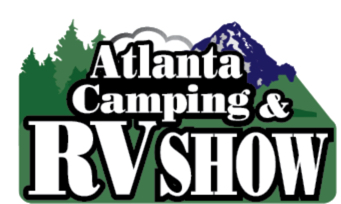 The Atlanta Camping & RV Show will be held inside Atlanta Exposition Center South, Jan. 25-27, 2019. It bills itself as the largest all-indoor RV show in Georgia, and with 211,00 square feet crammed full of every kind of RV imaginable, it’s not hard to see why.
The Atlanta Camping & RV Show will be held inside Atlanta Exposition Center South, Jan. 25-27, 2019. It bills itself as the largest all-indoor RV show in Georgia, and with 211,00 square feet crammed full of every kind of RV imaginable, it’s not hard to see why.
Wear comfortable footwear. You’ll have walked miles if you’ve traveled very aisle and walked through every RV on the floor.
Nine Georgia RV Dealers Under One Roof
The space will be filled with inventory from nine Georgia RV dealers.
They present varying manufacturers that specialize in different types of RVs.
Most of the participating dealers will list on the show’s dealer web page the units they’ll display closer to the date of the show. It’s impossible for dealers to show every model from every manufacturer they represent, but here are some of the brands sold by participating dealers:
- Airstream
- Aliner
- Alpine
- Avalanche
- Bighorn
- Carbon
- Cricket
- CrossRoads
- DRV
- Forest River
- Keystone
- Little Guy
- Livin-Lite
- Heartland
- Palamino
- Palomini
- Prime Time RV
- Puma
- Raptor
- Solaire
- Sprinter
- Sunset Trailer
- Z-1
Wall-to-Wall RVs To Tour
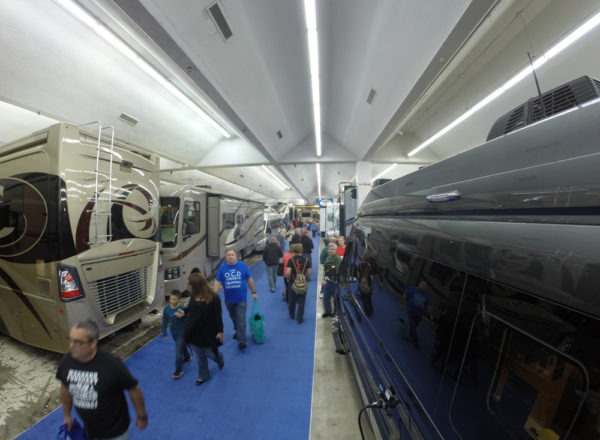 So, as far as your RV life goes, what are you thinking about right now?
So, as far as your RV life goes, what are you thinking about right now?
If all you want to do is make some changes to your RV—a new awning, a better generator, a stronger hitch, a more comfortable couch or bed—here’s a chance to find countless makes and models of the products you’re considering, all in one place. You’ll probably discover a few that you had no idea were out there.
Dream a little. Even if all you want to do is improve the RV you have, by touring the new RVs—including upscale models—you’ll see established and coming trends. Just about anything that’s popular on new RVs becomes available in the aftermarket sooner or later.
If you want to upgrade—buy a bigger trailer, switch to a motor home, move from a Class B to a Class C or Class A—they’re all bound to be on the show floor. You’re lkely to see not only examples of those RVs, but also fifth wheels, toy haulers and the increasingly popular park or destination trailers. Just starting out in RVing? You’ll see more modest trailers, too, such as popups, teardrops and truck campers.
You can do a lot more than kick the tires. Test out the work triangle in a Class A kitchen. Get behind the wheel and see how it feels. Sit on a toy hauler’s fold-down deck and see if it’s the kind of outdoor setting that satisfies you.
If you’re seriously looking, bring your title. Dealers offer big discounts on show models, with very little wear from all those visitors and intact manufacturers’ new-RV warranties. Discounts of tens of thousands of dollars are common at shows on bigger, more luxurious models. Even a teardrop or popup will carry a hefty show discount. Many deals are done on the show floor. Dealers sell used RVs, so they’re likely to take yours in trade.
More than RVs
In addition to the dealers, more than 80 exhibitors will set up booths displaying accessories, such as awnings, patios, outdoor tables and chairs, foldout grills and firepits; replacement items, such as interior furniture, appliances and generators; and destinations, such as campgrounds, parks and communities.
You’ll also be able to hear talks and see demonstrations to help you better maintain, travel in, insure and use your recreational vehicle. Manufacturers of products and providers of services who conduct the demonstrations share information based on their knowledge of RV systems and RV life. Sometimes celebrity RVers do the talking.
Among the topics will be things to do and avoid on short and long trips, how to find good campsites, hiking, and memberships that enhance the RV experience.
And of course, any time you get thousands of RVers together, you just get a chance to chat one another up and discover great tips about RV living and places to visit.
Event: Atlanta Camping & RV Show
Venue: Atlanta Exposition Center South
3850 Jonesboro Road
Atlanta, GA 30354
(I-285 at Exit 55)
Dates: Jan. 25-27, 2019
Hours: Friday, 11 a.m.–7 p.m.; Saturday, 9 a.m.-7 p.m.; Sunday, 10 a.m.-5 p.m.
Cost: $10, ages 17-54; $9, age 55 and older; $6, ages 6-16; age 5 and under, free.
Parking: Free
Directions: The Atlanta Exposition Center South is about a 2-hour drive south from Crossing Creeks RV Resort & Spa.
Dressing Your RV for the Holidays
Ready to get your RV into the holiday spirit? Here are some ideas.
It’s easy and affordable to imbue your trailer or motorhome with Christmas spirit.
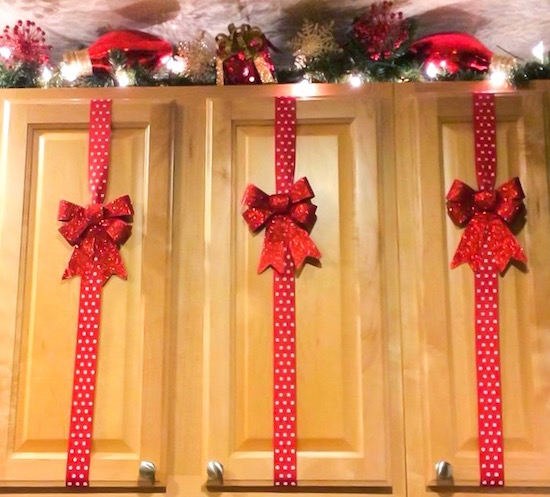 Giftwrap Your Kitchen Cabinets
Giftwrap Your Kitchen Cabinets
Nothing says Christmas like presents, so why not use that motif where you can in your RV?
Kitchen cabinet doors are a great place. They’ve got that Christmas-present rectangular shape. Their transformation into gifts concentrates on the doors.
You can just add ribbon and stick-on bows to the doors to dress them up in holiday style. Wrap the ribbons over the edge of the doors and tape them to the insides of the doors, or use a few tacks—as few as possible. If the bows won’t stay in place, use a paper stapler to fasten them to the ribbon.
Make a bigger splash by using rolls of wrapping paper to add color. Solid colors may be the best choice here; patterns can overwhelm. Use the paper—maybe a red or green, or a sparkly version—to wrap each door. Leave the smooth, full covering on the outside. Fasten with transparent tape or tacks inside. Fold the wrapping paper over the edges of the door and crease it at the edges so it lies flat more readily.
After the paper is on, you can apply the same ribbon-and-bow treatment mentioned above. Now, that’s a Christmas gift look.
Add Greenery
If you have the floor space for a tree, wonderful! It doesn’t have to be—and maybe shouldn’t be—too tall if you’re traveling, so it doesn’t tip over. If you’re here at the resort for the holidays, just set it up as you would in a bricks-and-mortar home. If you’ll be traveling, screw the tree stand onto a carpet-covered plywood cutoff, maybe 3x3 feet. Set the plywood on no-slip drawer liner so it doesn’t wander when traveling. It’s also good to tether the tree with string and thumbtacks before you move.
No room for a tree? No problem. Try stringing green garland—natural or artificial—along a wall. Natural will provide a holiday scent. Make sure there’s slack between connection points so it bows a bit toward the floor. You may not want to screw into your RV walls to do this, so use clear or white no-screw picture hangers every few feet. They’re cheap, they’ll get the job done, and they remove easily when you pull on a tab after the holidays.
Whether you have a tree or garland for greenery, add some mini LED lights—white or colors—to liven them up, and some small ornaments. You can even find RV-themed ornaments. If you plan to drive with the decorations up, choose modestly sized ornaments and use green or black tie wraps to attach them, rather than metal hooks. Some big red or white velvet bows add a tasteful pop. String white or colored LED bulbs through the garland.
Outside: Light it up!
If you live in a park, make sure you stay within the rules for outdoor holiday decorations.
An easy way to add nighttime decorations is with a laser light that projects against the side of your RV. Lights that project red and green dots are common, but these days additional colors are available. Many laser projectors offer a menu of shapes, often including holiday-related shapes—holly leaves, trees, stars, angels. Some laser projectors are dedicated to holiday shapes. You can set the projectd shaps to be stationary or to move. You’ll need a lasr light approved for outdoor use and an outdoor-rated power cord. Tips for decorating inside can work outside, too. A tree with lights at your site is tasteful and fun, and garland and/or a string of LED lights can be temporarily strung on your RV exterior for holiday flavor. The wrapping technique can work on your RV door just as easily as on cabinets, as long as you’re not traveling. You can buy weatherproof holiday door wraps, which you’ll have to trim to size for your RV. If you use paper, make sure the roll is long enough to go the length of the door, then cover with clear plastic. A traditional wreath is always fashionable—and removable when you roll.
Wreath decals are also available. As are decals with other holiday images and messages. They eliminate having to remove them when you travel.
Happy holidays, everyone!
photo credits: Pinterest

